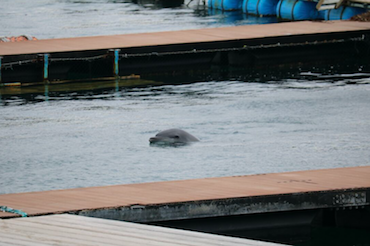Recently, just a few days before Christmas, it was business as usual with the dolphin drive hunts in Taiji, Japan, and this week’s activities represented a big win for the hunters. A large pod of bottlenose dolphins was netted in the cove, without any access to food for a total of four days, and underwent a brutal 3-day selection process. Eighty-five members of the pod were taken for a life in captivity, and at least one captured dolphin died in the process. The rest were eventually driven back out to sea, once captive selection was completed.
(Other dolphin species which are not in such high demand by aquariums will generally be killed for their meat and blubber in these hunts, unlike the bottlenose which are generally either captured or released with the rest of their decimated pod. Presumably this is to let the group try to recover and thereby generate more potential captives to meet future demand.)
Eighty-five! That number makes me want to both cry and scream. The thought that there could be so much demand for new live captures at any given moment is shocking even to those of us who’ve been at this for awhile. Think about that number. It represents revenue closing in on $10 million for the hunters. In case you’re wondering how anyone could choose to be a dolphin hunter. We can debate how many people would be willing to indulge in such cruelty for that kind of money – I personally believe most of us would not – but it will likely always be true that someone will be willing to do it.
Now, these men know precisely what it is that they’re doing. They are licensed under the Japanese Ministry of Fisheries, but they know they aren’t fishing, and that dolphins aren’t fish. They know that the cruelty involved is contrary to Japan’s own laws against the treatment of mammals, but that they are able to continue because dolphins have been misclassified. The hunters have observed many times and up close how the dolphins react and respond to seeing other members of their pod captured or killed. They know how intelligent dolphins are, how sophisticated are the social bonds among them, and how cruel the process of drive hunting is. None of this is lost on these men.
But they fall into that small class of people that will execute these actions regardless of the horror and injustice of it, when there are such staggering sums of money to be made.
Nevertheless, over time, we will beat them and bring dolphin hunts to an end, because what also remains true is that sustaining this business model requires one of two things. Either that the public that attends dolphin shows and creates the demand would continue to do so even if they knew what these hunters know, which is not the case. Or that the public is generally unaware of what really takes place behind the scenes of the dolphin show – which most definitely IS still the case. We’re going to change that, and put an end to the horror of these hunts once and for all. In fact, it’s cetacean captivity itself that we will put a stop to. We’ll do it by educating the public as to the true nature of these extraordinary beings, and to what the experience of captivity is really like for them. After all, most of us were as singularly unaware of these things ourselves, not so long ago.
But the job ahead of us remains staggering in its scope, and we have a long way to go. Remember that number – eighty-five!! – that represents a huge demand for this type of ‘entertainment’, and we’re clearly going to be at this for a while.
A list of aquariums that have most recently bought Taiji dolphins reveals the countries that are supplying the demand. China tops the list, and by a wide-margin, perhaps unsurprisingly. That country has seen a recent, rapid rise in affluence, thus spurring demand for new kinds of entertainment, and the building of many new captive facilities. India has been seeing very similar trends, but legislators there understood what science and marine mammal experts were telling them, and India wisely became the first country to extend personhood rights to dolphins. China is quite different culturally, and will be a much tougher nut to crack, but ultimately people are the same everywhere, and the end result will be the same. An aware and well-informed public will bring about change. For now, though, dolphins in China typically face high work loads doing constant, physically-demanding shows, are granted a poor standard of care, and a high death rate drives a need for constant replenishment.
Countries to which Taiji dolphins are sold, ranked by numbers of facilities:
- China 45%
- Ukraine 12%
- South Korea 10%
- Egypt 5%
- Russia 5%
- Taiwan 3%
- Then a large number with one aquarium each, with every country representing about 2% of the total:
Georgian Republic, Iran, North Korea, Mexico, Palau, Philippines, Saudi Arabia, Singapore, Thailand, Tunisia, Turkey
Consider how outrageous it is that North Korea appears on that list. That one is on the Japanese government, insofar as it permits the sale of dolphins to a country which is so far from recognizing even a semblance of human rights. On what basis can we even begin to imagine they’re about to start addressing standards for the care of other species? Seriously. Permitting these sales to the regime is tantamount to treating dolphins as nothing more than insensate commodities.
And let’s not forget that while the Taiji drive hunts are among the uglier aspects of the industry as a whole, the scale and scope of cetacean captivity for live entertainment – and all of the gross injustice that represents – goes far beyond these hunts.
But our side is determined. We will reach a day when there isn’t a single, individual dolphin legally held captive, anywhere in the world. My expectation is that it will arrive within an approximately 20-year timeframe (and 30 years at the outset). My teammates at CCA, as well as a great many colleagues at other organizations, will see to that. The question has never been about whether we’ll succeed in the long term, but about how soon – and how many of our fellow sentient beings will experience compassion and empathy at the hands of humans, rather than cruelty and injustice.
For The Orca’s Voice,
Phil, and the Canadian Cetacean Alliance team



Leave a Reply